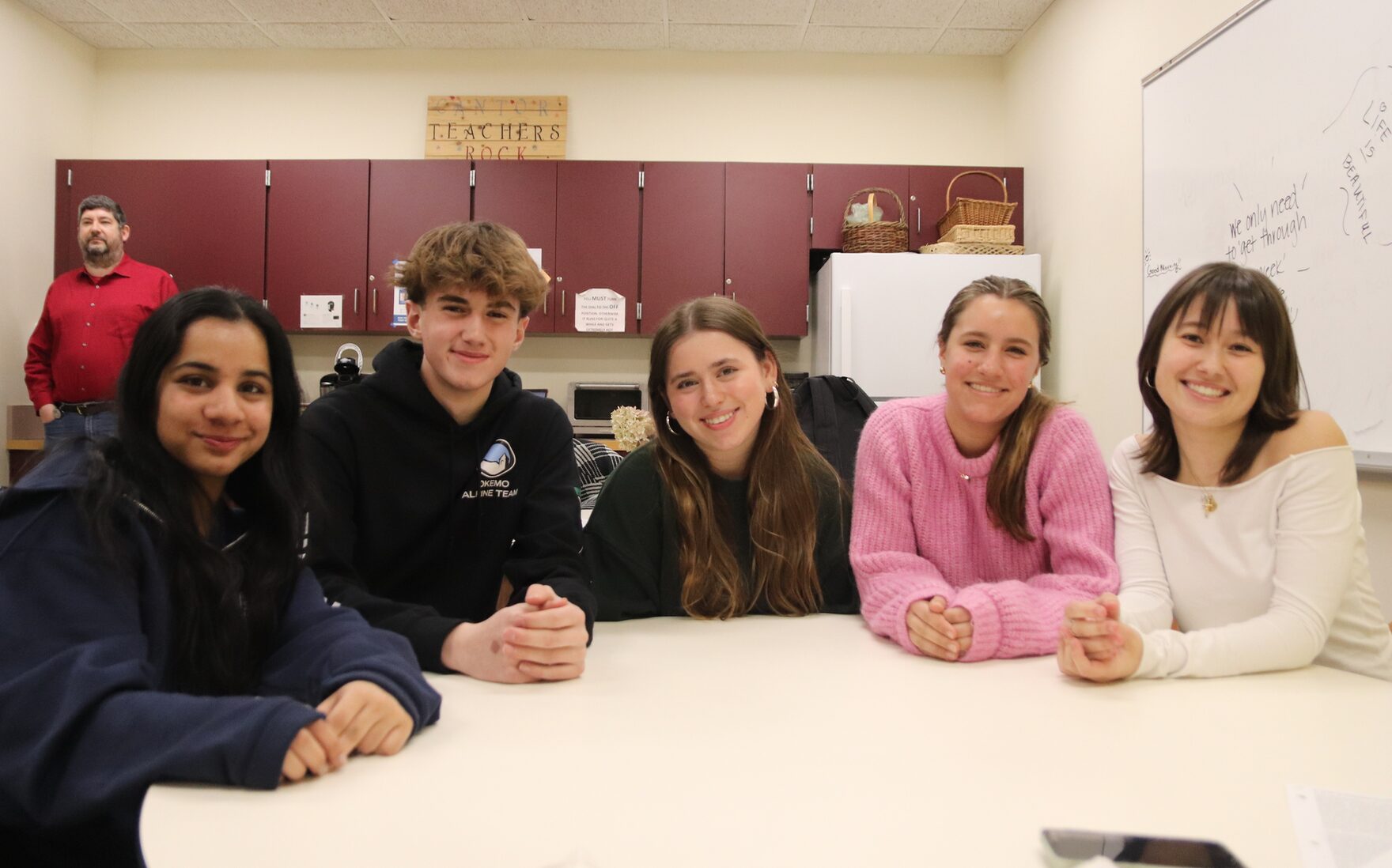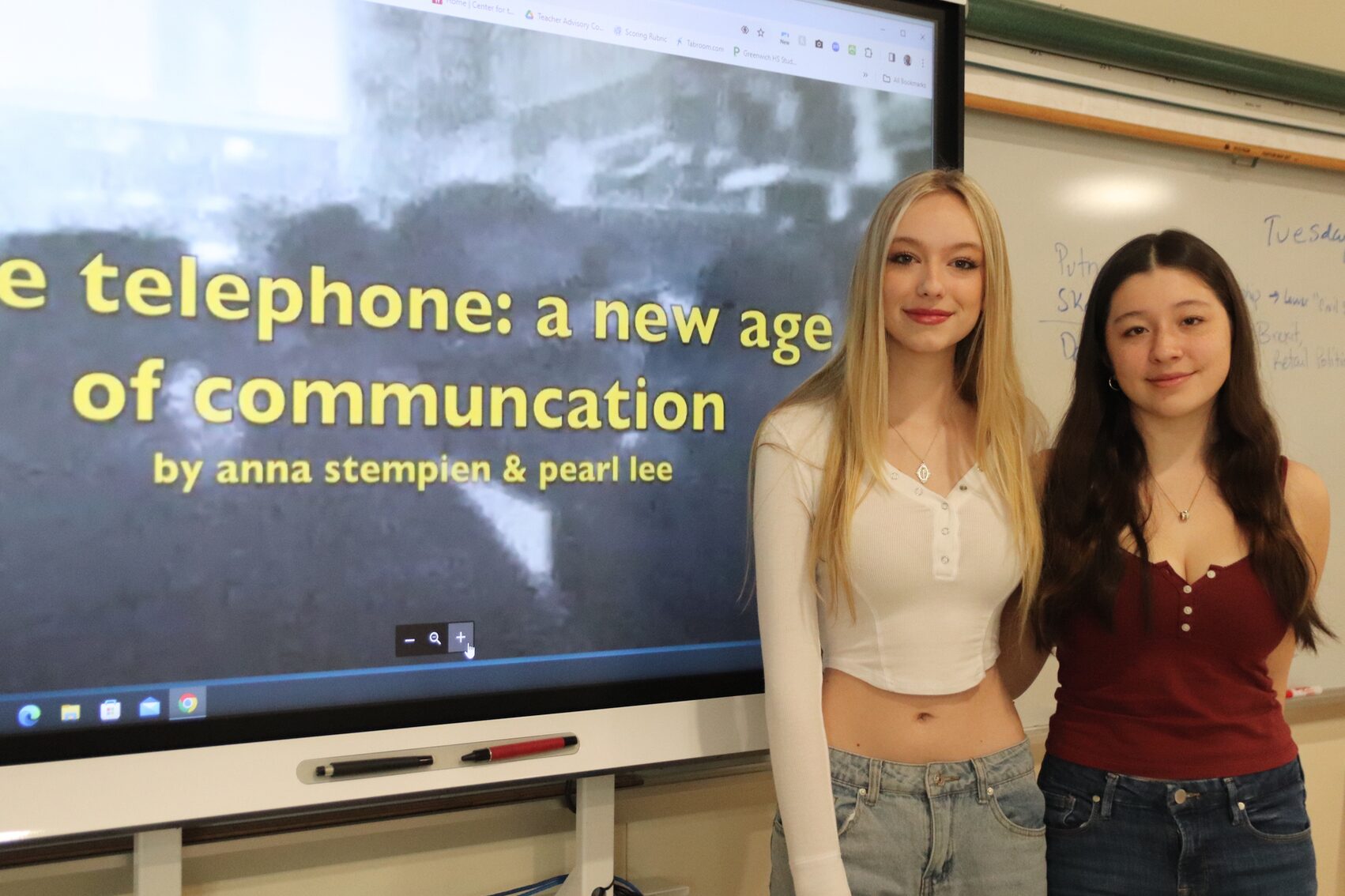At Greenwich High School 10 students have qualified for Connecticut History Day competition which feeds to the National History Day Competition, Now in its 50th year, it will be held at the U Maryland in College Park in June.
Traditionally there have been three programs that serve as routes for students to participate in the competition.
Social Studies teacher Aaron Hull explained that in the years when We The People students don’t compete at the national competition, students choose group projects including, National History Day, Harlan Virtual Supreme Court, Yale Moot Court, and the NPR Podcast Challenge for their curricular requirement for earning UConn early college enrollment credit.
Second, Social Studies teacher Karen Boyea also supports students through History Day.
And, third, when it existed, Innovation Lab used History Day as a primary project tool, baking it into their curriculum. Sadly, that program came to an end this year.
Nevertheless, History Day presents a great opportunity for students to take what they’ve learned in class and use it outside school.
“It’s one of the pathways for Humanities students to show what they know on a national stage,” Mr. Hull said.
This year two of the three groups were from Mr. Hull’s AP Government class and one group was from Ms Boyea’s class.
Columbian Exchange
GHS junior Thomas Stowe said his group performed a play about the effects of the Columbian Exchange in the late 15th and following centuries, where people, crops and animals moved between the old world and new world.
“The project was to show it was a pivotal change resulting in both positive and negative global impacts, particularly in Africa and the Americas,” Thomas said.
Though the Columbian Exchange arguably made the world more connected, downsides included the introduction of diseases such as Smallpox and Syphilis, decimating indigenous populations of the Americas. And that gave rise to the slave trade.
Thomas said his group’s play debunked the misconception that the Americas and Africa had not been previously developed.
“A lot of people think there was nothing there before, but in the Americas you had the Aztec and the Inca empires. We also talked about how afterward so many in the native population had been killed off, that it led to the rise of the slave trade.”

GHS junior Thomas Stowe at Greenwich High School. Not pictured: Jack Berrett and Niels Fischer. March 12, 2024 Photo: Leslie Yager
North American Free Trade Agreement – NAFTA
Juniors Tavishi Choudhary, Mariana Huba, Lindsay Schuler, Owen Benison, and Brooke Cumberland looked at new trade agreements and increased globalization resulting from NAFTA.
They did a performance highlighting impacts on three families – an American, Canadian and Mexican family – showing how each was impacted both positively and negatively.
“We did a large section on how the American middle class began to dissolve after NAFTA,” Mariana said. “They were working at a GM Motor plant in the US, and that job moved to Mexico because they could get away with paying workers 60¢ a day and not give benefits like health insurance.”
“We also talked about some of the environmental impacts that come from NAFTA. The factories that crossed over the border didn’t have the same protections and regulations we had up here.”
“We mention in our performance, not allowing bathroom breaks for workers, causing UTIs, and being exposed to environmental cancers and pollution,” Lindsay said.
Owen said the group also looked at the cultural impacts of jobs that were in locally owned businesses were lost and jobs at large corporations were created.
Brooke, Mariana and Tavishi talked about how indigenous farmers in Mexico wound up moving north as farming moved to large company owned farms, resulting in the loss of heritage and culture.
“We also talked about positive impacts,” Owen said. “We had a character who is a high ranking senior person at a tech company who became a lot more successful because of outsourcing of production and the increased profit margin.”
The group compared and contrasted the life of both a CFO and a factory worker to show how people in the same place at the time fared differently.
“NAFTA benefited company owners and high ranking people, but it overlooked the lower and middle class Americans,” Mariana said.
“It made things cheaper, and prices lower, but the human cost born by workers, which we see in Mexico brings the question, was it worth it?” Lindsay said. “Things like diapers and appliances came down, but profit margins also increased because they were paying workers next to nothing, they weren’t keeping up with environmental regulations, they weren’t giving workers proper compensation and breaks, and they weren’t worried about health insurance.”

Tavishi Choudhary, Mariana Huba, Lindsay Schuler, Owen Benison, and Brooke Cumberland did a project for the history competition on the impacts of NAFTA. March 12, 2024 Photo: Leslie Yager

Tavish Choudhary, Owen Benison, Brooke Cumberland, Lindsay Schuler and Mariana Huba at GHS. March 12, 2024 Photo: Leslie Yager.
The Telephone – A New Age of Communication
Anna Stempien and Pearl Lee, from Karen Boyea’s class, looked at how the telephone became a turning point in history starting around the turn of the last century, allowing people to communicate across great distances and rapidly speed up the flow of information.
Anna and Pearl, who grew up with cell phones being the norm and rotary phones and landlines a thing of the past, got to wondering about the origins of the phone.
Together they explored how the widespread use of the telephone impacted not only business and warfare, but empowered women through employment outside the home.

Anna Stempien and Pearl Lee created a documentary on the impacts of the telephone. March 12, 2024 Photo: Leslie Yager
“When it was created there were call centers full of telephone operators who would connect the calls and women dominated the field,” Anna said. “Prior to that it was mostly men.”
“They hired women but did weight checks because the women needed to fit into small spaces lined up shoulder to shoulder,” Pearl said. “They wanted them to be skinny to fit more workers.”
“They could also pay them less and have them work longer hours. They were told to be silent and be very polite,” she added.
“They organized a strike in 1919 in which they fought back and made progress for women’s rights, especially at the time when women were seeking suffrage,” Anna said.
Pearl looked at the impacts of the telephone on business, and interviewed telephone industry pioneer Dr. Charles Lee, a former USC professor who also worked at AT&T, MCI and Xerox.
Pearl said Dr. Lee, who is featured in the documentary, was on the scene when the communications industry blossomed in the transition from analog to digital.
The documentary notes how the telephone along with the automobile, stimulated the growth of suburbs and allowed businesses to communicate between offices, with clients and individual consumers across great distances.
The girls noted that the telephone was originally mocked as a mere “toy,” but went on to fulfill a deep human need, allowing people to communicate across vast distances.
See also:
GHS Debate Team: Winning Tournaments, Becoming Better Speakers, Seeing Both Sides March 13, 2024
